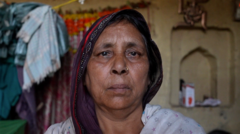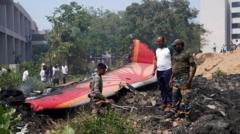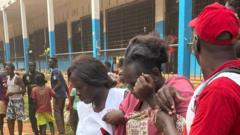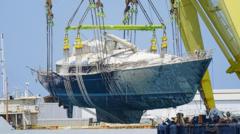The recent stampede at New Delhi Railway Station, attributed to severe overcrowding, has left at least 18 dead and numerous injured. The tragedy has drawn condemnation from opposition leaders and sparked investigations into safety measures at the station, with many eyewitnesses and families expressing their sorrow and frustration over the lack of timely intervention.
Grief and Outrage After Deadly Crush at New Delhi Railway Station

Grief and Outrage After Deadly Crush at New Delhi Railway Station
A tragic incident involving overcrowding at India's New Delhi Railway Station results in 18 fatalities and ignites political and public criticism.
On a bustling Sunday morning, the atmosphere at the New Delhi Railway Station is typically frenetic, with passengers anticipating their train journeys. However, the preceding night witnessed a devastating crush that claimed at least 18 lives, reportedly due to severe overcrowding. The incident occurred as two trains faced delays, along with a third bound for Prayagraj, the site of the significant religious gathering, Kumbh Mela, currently underway.
According to Indian Railways, the chaos commenced when a passenger lost balance and fell, which triggered a catastrophic pile-up. The incident has ignited outrage among opposition leaders, who have accused the government of failing to implement adequate crowd control measures. In response, an official investigation is underway, and authorities have pledged compensation to the affected families.
In discussing safety at the railway station, Pankaj Gangwar, Principal Chief Security Commissioner of Northern Railway, stated that the investigation's conclusion is necessary before making further comments. Tragically, such incidents are not uncommon in India, particularly at large public events. The recent Kumbh Mela also saw fatalities when overcrowding led to a similar crush, resulting in approximately 30 deaths.
Eyewitness accounts highlight the mayhem experienced as individuals grappled with both the physical crush and the emotional toll of witnessing loved ones succumb to the chaos. Bipin Jha, present to receive his wife Mamta, recounted her death as a devastating moment that etched guilt upon his heart. “I will live my life with the guilt of not saving her,” he shared. Similarly, Umesh Giri expressed disbelief over the uncontrollable nature of the crowd as he sought help, having lost his wife Shilam Devi in the incident.
Witnesses detailed a scene of panic, with belongings strewn across the floor as victims collapsed underfoot. Usha Devi, en route to her nephew's wedding, described the scene as disorienting, highlighting the sheer density of the crowd that rendered train boarding impossible. The aftermath saw victims transported to Lok Nayak Jai Prakash (LNJP) Hospital, where families expressed their grief and frustration over inadequate medical facilities.
Criticism extended beyond the incident itself, as family members voiced their anger at hospital conditions, claiming that multiple patients were forced onto single beds. Reports from Lady Hardinge Hospital reflected similar sentiments, as grieving relatives mourned the tragic loss of young ones, reaffirming the collective heartbreak felt across communities affected by this catastrophe.
In the face of such loss, the call for accountability and improved safety measures has become paramount, as families navigate their grief amidst a backdrop of public outrage against systemic shortcomings in managing crowd control at one of India’s busiest transport hubs.





















